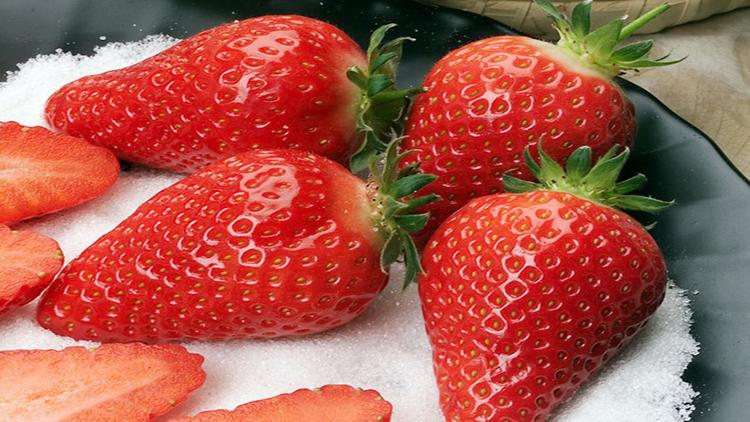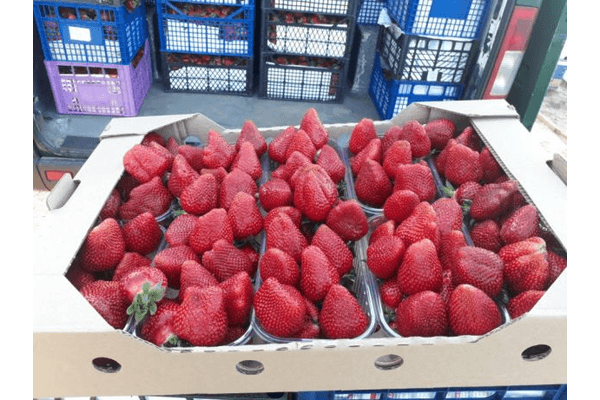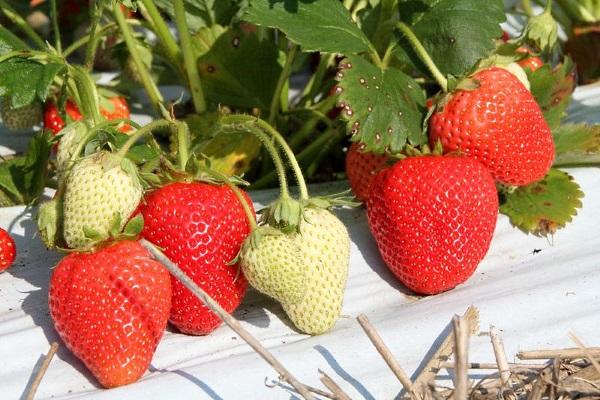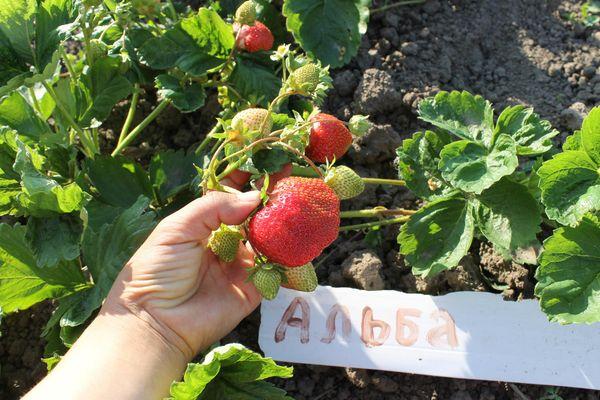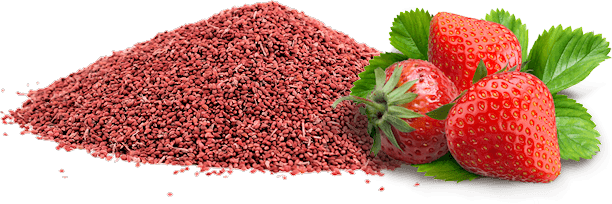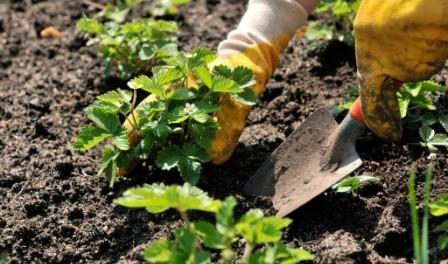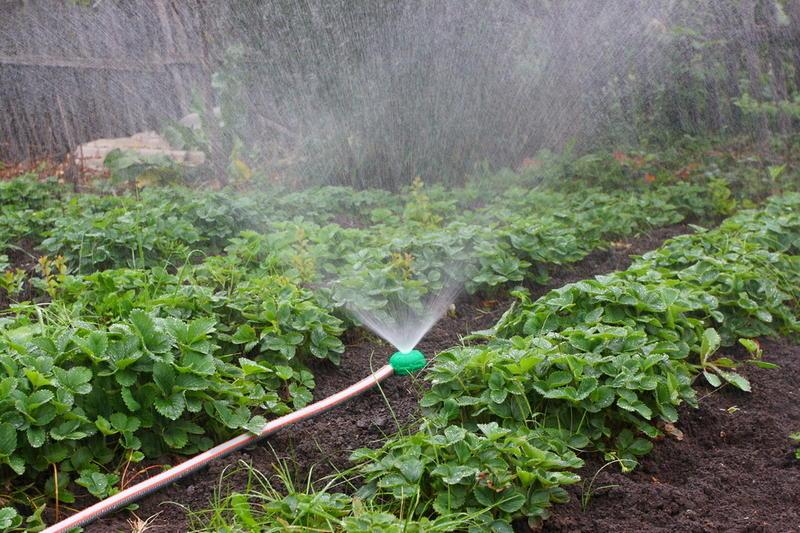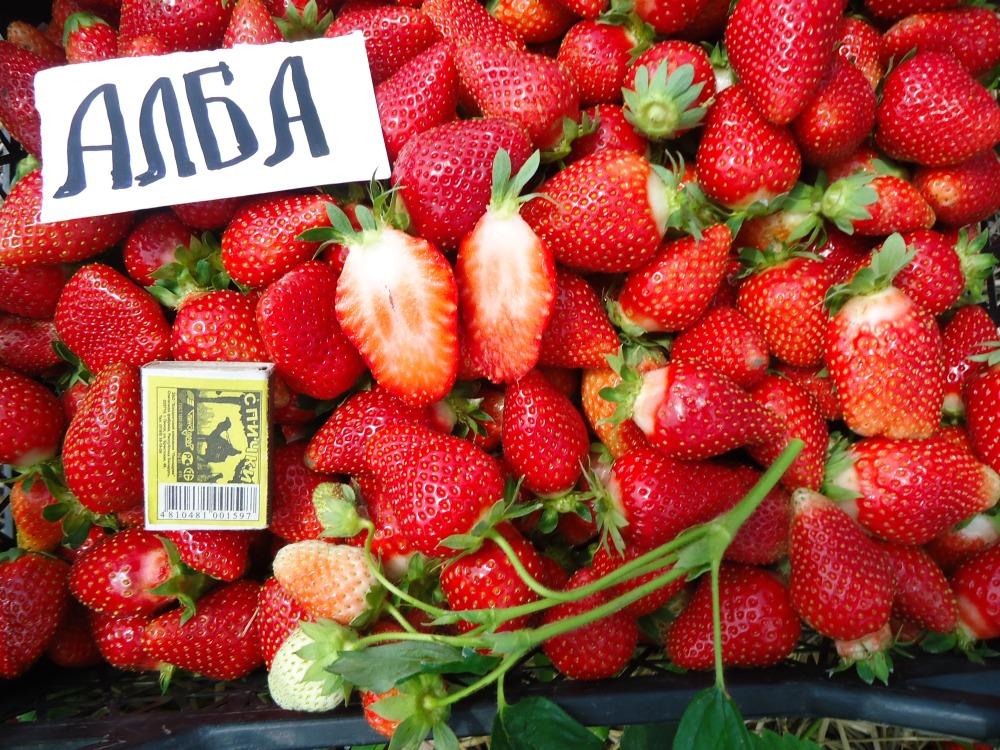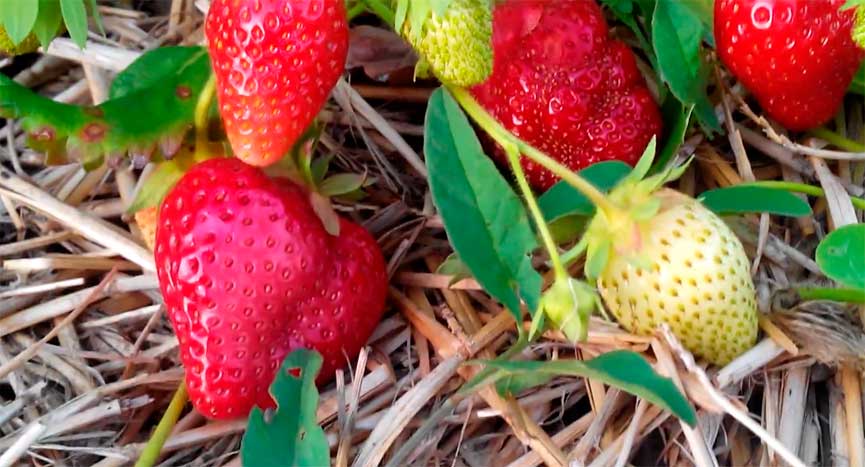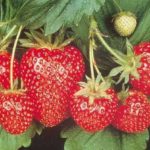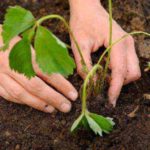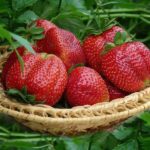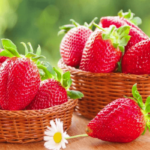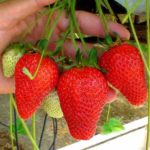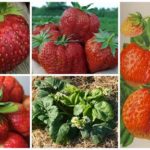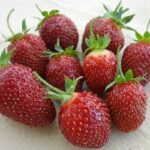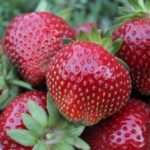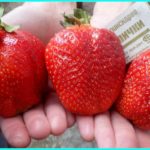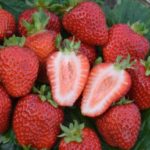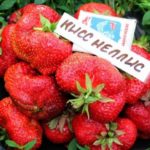Many farms are now growing strawberries for sale. They purchase varieties for planting that do not lose their presentation during transportation, but are inferior in taste and aroma to berries that ripen in dacha and suburban areas. At the beginning of the 21st century, a company from Italy, New Fruits, developed a productive variety of garden strawberries. Alba is well transported, takes root in temperate climates, and beautiful berries ripen early.
- Description and characteristics of the variety
- Appearance of the plant
- Flowering and fruiting times
- Productivity
- Description of fruits
- Usage
- Transportability and shelf life
- Advantages and disadvantages of Alba strawberries
- Rules for growing a plant
- Sowing seeds
- Growing from seedlings
- Soil for planting
- Planting scheme
- Features of caring for strawberries
- Watering
- Mulching
- Preparing for winter
- How is the variety propagated?
- Bush dividing method
- Rooting tendrils
- Seed method
- Treatment of diseases
- Pest protection
Description and characteristics of the variety
The closest relative of the garden strawberry, Cal or Albion, is grown in many countries of Western Europe, Russia, Moldova, and Belarus. Alba strawberries will ripen both in the greenhouse and in the garden.
Appearance of the plant
A powerful bush of an Italian variety, reaching a height of 35 cm, covered with large brightly colored leaves. Cone-shaped berries are borne on strong elongated peduncles, and when ripe they acquire the same size and a beautiful shade.
Flowering and fruiting times
Buds on strawberries of the Alba variety appear in the second ten days of April, in the greenhouse - a week earlier. In the south of Russia, Ukraine, and Moldova, the berries ripen in mid-May; in the middle zone and Belarus, strawberries ripen until June 15.
Productivity
Alba bears fruit once a season, since it is not a remontant strawberry, but the berry picking lasts 14-16 days. The variety pleases not only with its early ripening, but also with its high productivity. Under favorable conditions, about a kilogram of berries is harvested from one bush; in Russia, the yield of garden strawberries is slightly lower and amounts to about 800 g.
Description of fruits
Strawberries are formed on long peduncles that bend and lie down when they ripen. The Alba variety has different berries:
- large size;
- red-crimson color;
- elastic pulp.
One fruit weighs about 30 g, has a conical shape, and delights with its sweet and sour taste and garden aroma. The berries, which ripen almost simultaneously, are rich in vitamins and antioxidants.
Usage
Both adults and children enjoy eating early strawberries. In addition to fresh consumption, Alba fruits are frozen and used in the preparation of compotes, jams, and preserves. The berries are ground with sugar.
Transportability and shelf life
Strawberries of Italian origin in boxes withstand transportation well, do not lose their presentation, and do not leak juice. The fruits of most varieties are stored in the refrigerator for 3 to 4 days, but dense berries will last for a whole week at 0–2 °C.
Advantages and disadvantages of Alba strawberries
The variety of Italian selection has many advantages. Garden strawberries thrive in cool, dry climates and die after frost. Alba's advantages include:
- fast and friendly maturation;
- presence of immunity to diseases;
- attractive appearance of berries;
- high productivity;
The variety does not suffer from verticillium, is not afraid of powdery mildew, and is not affected by fusarium. Strawberries also have some disadvantages, but they are few. The taste of berries is rated not at 5, but at 4.7 points. To get a good harvest, you need not to neglect agricultural technology and carefully care for the plantings. The Alba variety is susceptible to infection by ascomycete fungi and suffers from brown spot.
Rules for growing a plant
Strawberries love loose soil, in areas where groundwater comes close to the surface, they feel uncomfortable and need good lighting. Before planting strawberries, the soil must be fertilized with organic matter and mineral components added.
Sowing seeds
There are several ways to propagate Alba strawberries. If the crop is already growing on the site, you can divide the bushes, but in order to preserve varietal characteristics and reduce the risk of disease development, seeds are planted.
The seed material is disinfected in a solution of potassium permanganate.The bottom of the transparent container is covered with gauze or cloth. Using a toothpick, lay out small strawberry seeds, spray with water, and leave in a warm place. After two days, the planted seeds are sent to the refrigerator for hardening.
Peat tablets or boxes are filled with a disinfected substrate, which is prepared by combining sand and garden soil in equal volumes. Add a little lime to the soil.
In mid-latitudes, seed is planted in January or February. Strawberry seeds are placed in shallow grooves, moistened, but not covered with soil. Cover the container with film or glass until sprouts appear.
To ensure that young seedlings grow well:
- Regularly water with settled water using a syringe.
- Feed with ash or mineral complexes.
- Once a month the substrate is treated with Trichodermin.
Alba strawberry seedlings are planted in separate containers. Before moving to a permanent place, young bushes are hardened off, and when plaque appears, they are sprayed with biological fungicides.
Growing from seedlings
Cultivating Alba strawberries from seeds is a long process, so many summer residents purchase bushes with roots. When placing them in the soil, you need to monitor the growing point. It should be located above the surface. Strawberries are planted towards the end of summer, choosing a cloudy day. It is best to start the procedure in July, August or spring. The plant has time to get stronger before frost or heat sets in.
Soil for planting
Alba develops well and bears fruit in loose soil; the application of mineral fertilizers and the addition of organic matter in the form of bird droppings, compost, and vermicompost help improve the soil structure.
Planting scheme
Holes are dug in the area developed for strawberries.A little sand is poured into each hole, bushes are lowered, the space is filled with soil and moistened with water. Alba seedlings are placed at intervals of 20–25 cm, leaving up to 40 cm between rows. The ground under the plants is covered with sawdust and hay, and mulched with compost.
Features of caring for strawberries
Although Alba is considered an unpretentious variety, the plantings need to be cared for carefully - feeding, moistening the soil, and in mid-latitudes preparing for wintering.
Watering
Strawberry roots are located close to the surface and cannot get water from deep layers of the earth. The crop especially needs moisture before flowers appear. The plant responds positively to drip or sprinkler irrigation systems. After watering, the soil is loosened and mulched, which prevents rapid evaporation of water. The seedlings need to be moistened every day, then the amount of irrigation is reduced to 3 times a week so that the soil does not dry out.
Mulching
After planting and watering the bushes, as well as for the winter, the ground under the strawberries is covered with different materials. In summer and spring this helps retain moisture. In autumn, plants are mulched to protect them from soil freezing, damage and death of roots:
- The needles repel pests and prevent the development of diseases.
- Green manure and straw serve as food for strawberries.
- The bushes are covered with tree bark for the winter.
- Plants can be mulched with sawdust.
In recent years, black film or spunbond has been used. The material, produced using special technology, maintains an optimal temperature and does not allow the hot rays of the sun to pass through.
Preparing for winter
Alba does not tolerate frosty, snowless weather. To protect plants from freezing, you can hill up each bush, covering it with peat or compost on top.Suitable for mulching:
- needles;
- tops;
- hay.
Some gardeners install arcs, stretch agrofibre or spunbond. Covering material is removed in the spring.
How is the variety propagated?
There are several ways to increase strawberry plantings.
Bush dividing method
To propagate the Alba variety, in the spring, plants aged 2 to 3 years, from which the largest number of berries were collected, are dug up:
- Using a disinfected tool, the roots of the bushes along with the rosette are separated into parts - 2 or 3.
- The sections are treated with potassium permanganate.
- Plants are planted in prepared holes.
With this method of propagation, strawberries quickly become stronger. In the same season, the first fruits appear.
Rooting tendrils
At the end of June - beginning of July, in a greenhouse or greenhouse, the soil is mixed with peat and fertilized with humus. Prepared soil is poured into the container and the antennae are placed, which are regularly moistened and fed with mullein. When 6 leaves appear, the strawberries are sent to the garden.
Seed method
This method is rarely used when planting the Alba variety; small grains do not always sprout. Seed material must be purchased from specialized centers. The seeds are disinfected in a solution of potassium permanganate, placed in containers with a substrate, kept warm in good light, and picked when a leaf appears. In spring, seedlings are hardened off and sent into the ground.
Treatment of diseases
To prevent the development of brown spot and the proliferation of ascomycete fungi, Alba bushes are transplanted to a new location every 4 years, the roots are soaked in a growth stimulator before the procedure, and the soil is disinfected with an iodine solution. When brown spots appear on plants:
- Remove and burn dried leaves.
- The bushes are watered with potassium permanganate.
- The beds are sprayed with Bordeaux mixture.
Alba is not affected by powdery mildew. The variety does not suffer from fusarium blight.
Pest protection
Strawberries attract nematodes. To prevent the appearance of parasites, before planting, plant bushes are dipped in hot water and then in cold water, the beds are weeded to remove weeds, and the soil is disinfected with lime or copper sulfate.
The weevil, which overwinters under the leaves, lays eggs in flower buds in the spring.
Treatment of plants with ash or mustard helps to cope with this pest. To protect strawberries from the strawberry mite:
- Remove any remaining stems and roots.
- At the end of summer, the bushes are mowed.
- The beds are treated with colloidal sulfur or onion peels.
If plant leaves are attacked by aphids, water the soil and strawberries with garlic infusion or mustard soap solution. To protect against mole crickets, baits are placed and calendula is sown. Plants are saved from slugs by covering the beds with agrofibre, mulching with sawdust, and spraying with salt.

